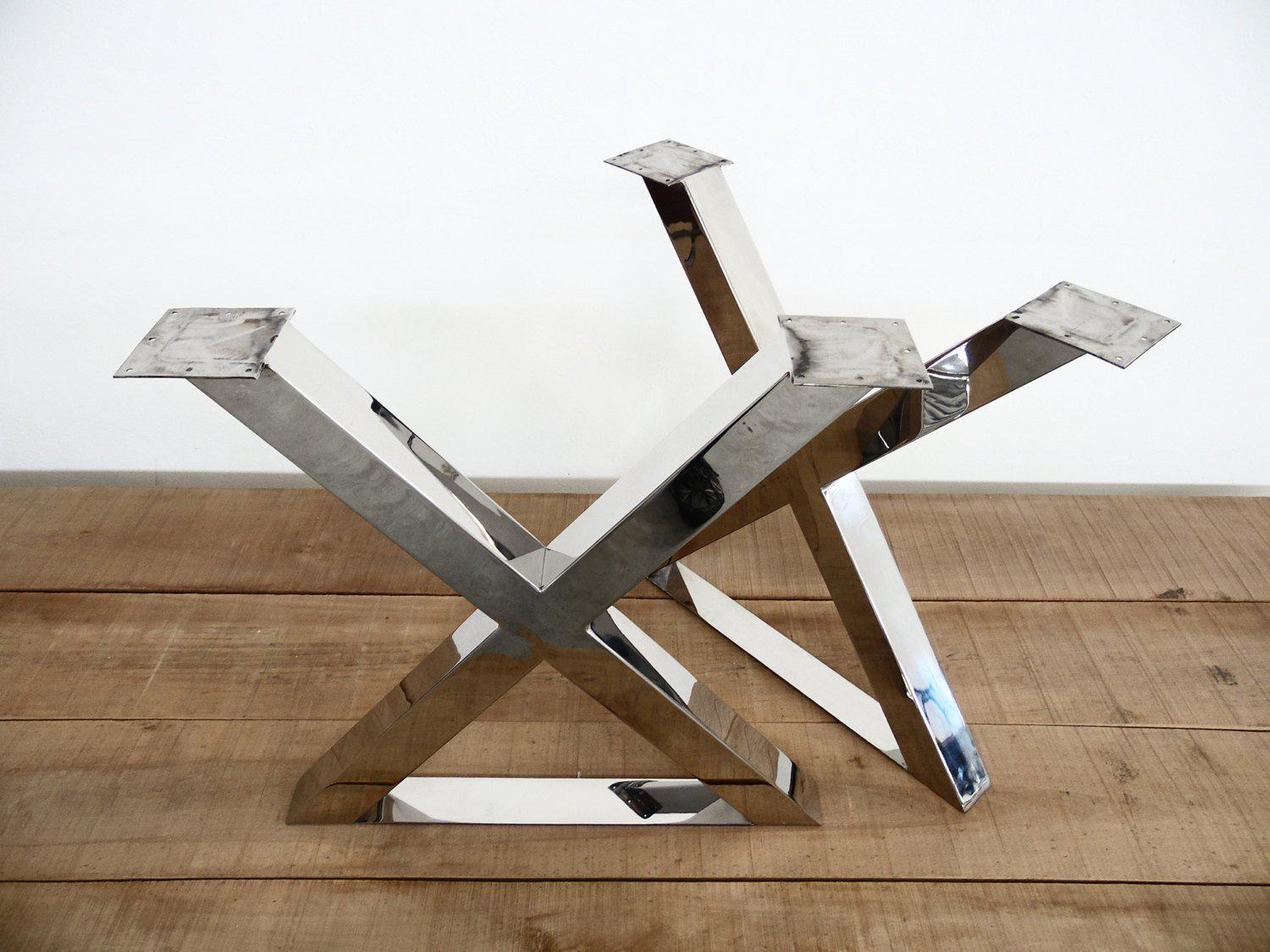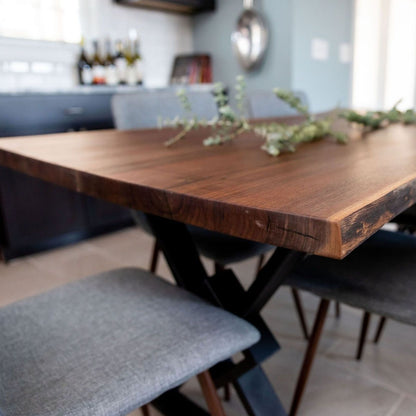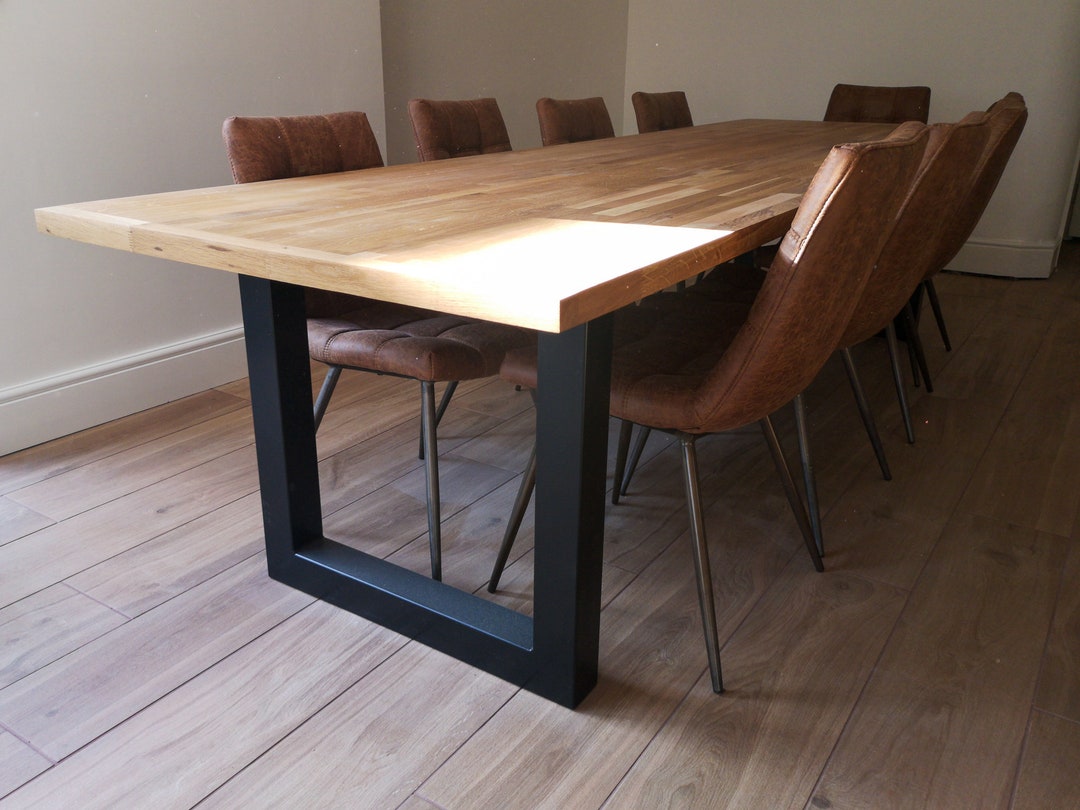Why Dining Room Table Legs Are Crucial for Your Table’s Stability
Why Dining Room Table Legs Are Crucial for Your Table’s Stability
Blog Article
Professional Tips for Installing Dining-room Table Legs for Optimum Stability
When it pertains to setting up dining-room table legs, accomplishing optimum stability is extremely important for both functionality and visual appeals. The procedure starts with choosing the ideal products and hardware, adhered to by careful alignment and consideration of weight circulation. Each step plays an essential function in making sure that the completed product holds up against day-to-day usage without jeopardizing safety and security or layout honesty. Nevertheless, understanding the subtleties of these elements can considerably influence the total result. What particular techniques can boost stability even further?
Choose the Right Legs
When picking the suitable legs for your dining-room table, it is vital to consider both performance and aesthetics. The legs you pick will dramatically impact the overall style and security of the table. Examine the table's planned usage; if you expect frequent gatherings, tougher legs, such as those made from strong timber or steel, might be extra suitable, as they provide enhanced toughness and assistance.
Typical eating tables normally range from 28 to 30 inches in height, so ensure the legs align with this criterion for comfort. Conical legs can add a contemporary touch, while transformed legs may share a much more classic aesthetic.

Select Appropriate Equipment
How can the appropriate hardware improve the stability and long life of your dining-room table? The option of suitable equipment is essential to making sure that the legs of your table are safely affixed and able to endure normal usage. Premium screws, screws, and brackets offer the necessary stamina to sustain the weight of the table, along with any added loads put upon it throughout events or dishes.
When picking screws, choose those made from sturdy materials such as stainless-steel or brass, which resist deterioration and maintain stability gradually. The length of the screws is just as vital; they should penetrate deeply into the table's framework without compromising integrity. For bolted links, think about making use of lock washing machines to stop loosening up due to vibration or motion.
Additionally, utilizing corner brackets can add extra support, especially for bigger tables or those with larger tops. These braces disperse weight equally and assist preserve the table's shape. Ensuring that the equipment you choose is suitable for the particular materials of your table will better boost its general stability and longevity, permitting you to appreciate your eating experience for several years ahead.
Ensure Appropriate Alignment
Appropriate positioning of dining area table legs is necessary for both aesthetic appeal and useful stability. Misaligned legs can lead to an uneven table top, which may not only be visually unappealing however also endanger the table's use. To achieve ideal positioning, begin by gauging the range from the table's edges to the leg accessory factors. This makes sure that each leg is located equidistant from the sides, producing a well balanced look.
Use a level during setup to confirm that each leg is vertical to the tabletop. This action is critical, as also small inconsistencies can rise right into significant security problems over time. It is suggested to note the desired leg positions on the bottom of the table with a pencil or masking tape before protecting them. This practice serves as an aesthetic overview, permitting changes as required.
Moreover, confirm the placement after the first screws are tightened, as modifications might be required prior to fully safeguarding the hardware. By prioritizing proper alignment, you not just enhance the table's overall design but also make sure that it stays steady and practical for several look these up years ahead.

Consider Weight Distribution
After ensuring correct alignment of the eating space table legs, it is very important to think about weight circulation to enhance stability and capability. dining room table legs. Correct weight circulation is vital in stopping making certain and tottering that the table can support its desired lots without danger of tipping or collapsing
When positioning the web link legs, ensure they are put at equivalent ranges from the facility of the table to uniformly disperse the weight across the framework. Think about the weight of the tabletop and any type of products that will often relax on it, such as attractive pieces or tabletop appliances. Tables with much heavier surfaces should preferably have legs located closer to the corners, as this maximizes the base of support and lessens the threat of instability.
Additionally, if the table is planned for usage in a high-traffic location, think about making use of heavier products for the legs or adding stabilizing aspects, such as cross-bracing or a reduced shelf - dining room table legs. These adjustments can assist keep balance and stop shifting throughout use. Inevitably, a well-considered weight distribution method will substantially enhance the table's general efficiency, guaranteeing it remains a functional and appealing centerpiece for your eating space
Test Security Prior To Use
Examining the security of the eating area table before use is an essential step that should not be neglected. If the table reveals instability, determine the legs or joints that may need adjustment.
Following, inspect that all screws and fasteners are tightened up view website properly. Loosened links can cause instability and prospective damage over time. If required, use timber glue on joints to improve security, making sure to enable adequate drying out time.

Final Thought
To conclude, the installation of dining-room table legs needs careful consideration of products, placement, hardware, and weight distribution to accomplish maximum stability. By picking high-quality fasteners and strong legs, guaranteeing exact positioning, and dispersing weight equally, the architectural stability of the table can be dramatically boosted. Conducting a stability test prior to normal use even more makes certain that the table will endure everyday pressures, therefore providing a trusted and safe dining experience.
When it comes to installing dining room table legs, achieving optimum security is vital for both capability and visual appeals. The legs you choose will considerably affect the general style and security of the table (dining room table legs). Typical eating tables generally range from 28 to 30 inches in height, so guarantee the legs align with this standard for comfort.Appropriate positioning of eating space table legs is vital for both aesthetic allure and functional security.In final thought, the setup of dining space table legs calls for cautious consideration of products, positioning, hardware, and weight distribution to achieve optimum stability
Report this page